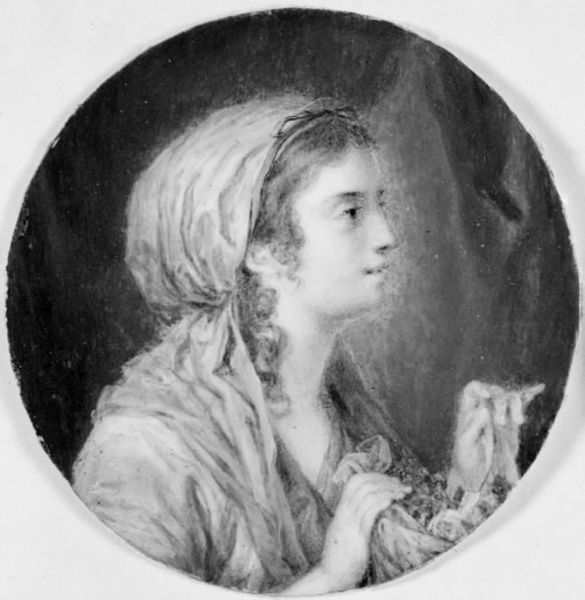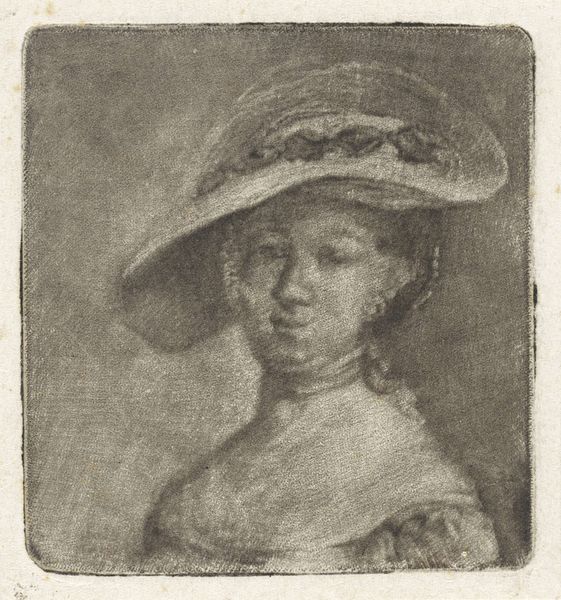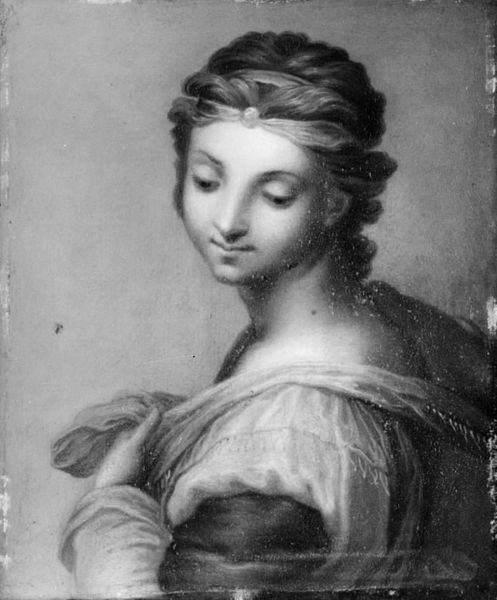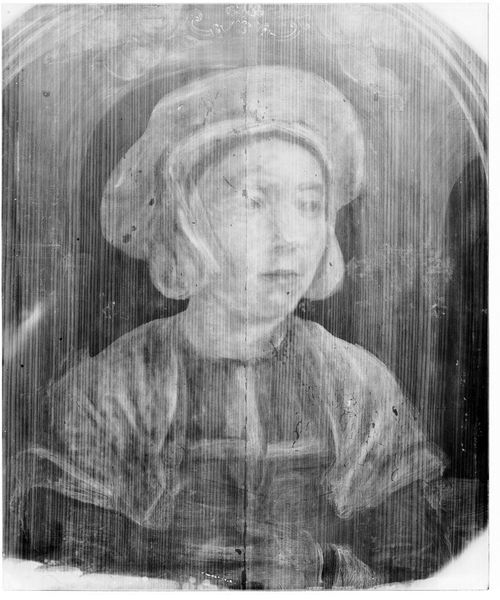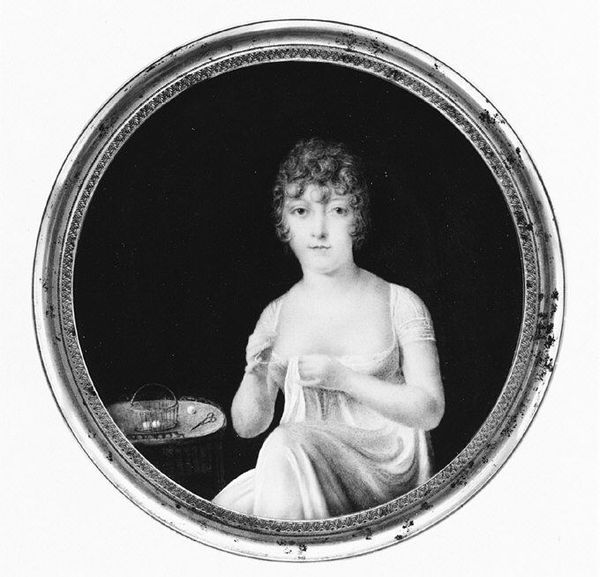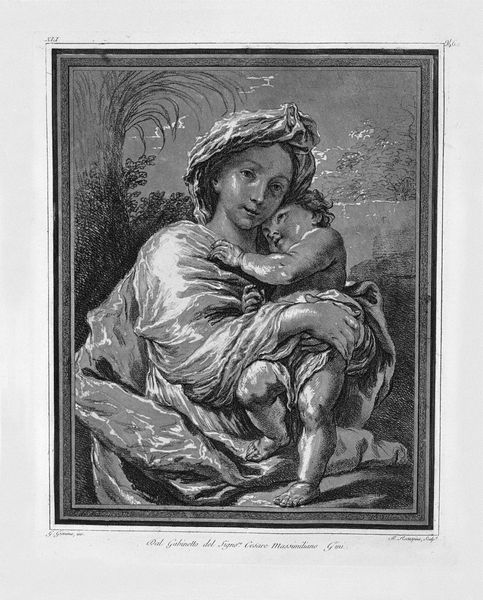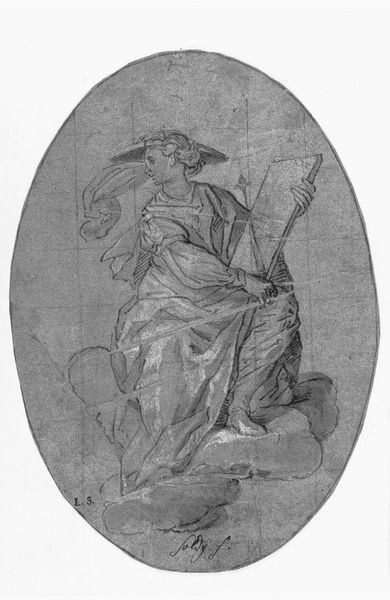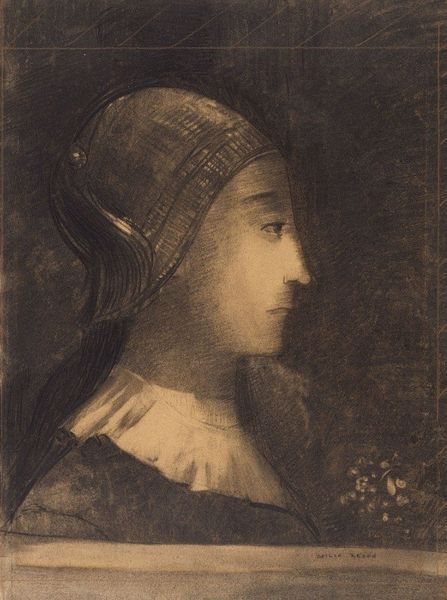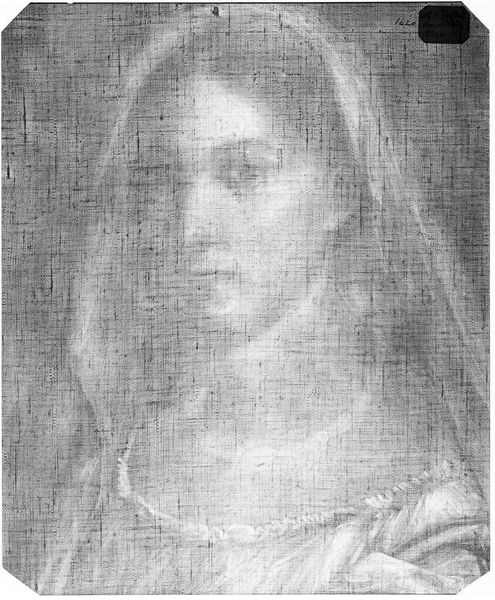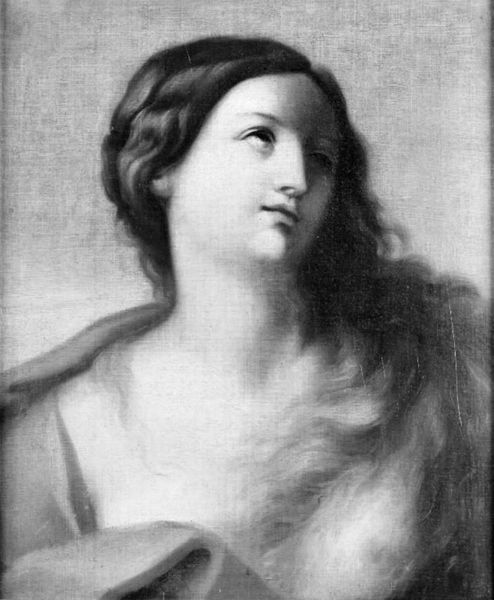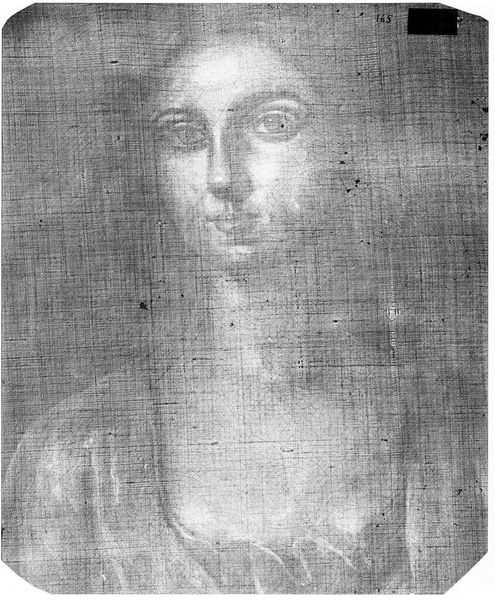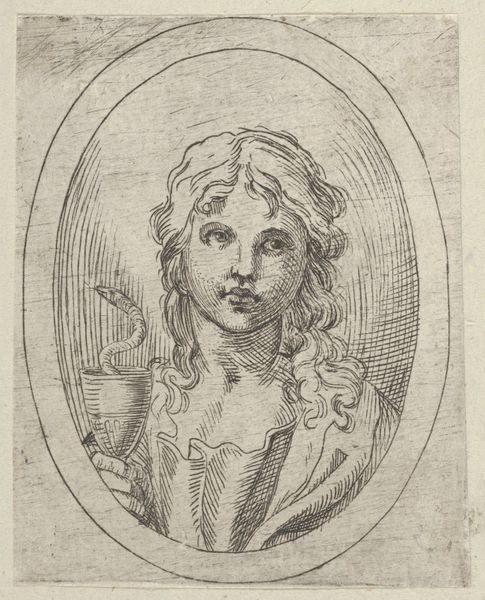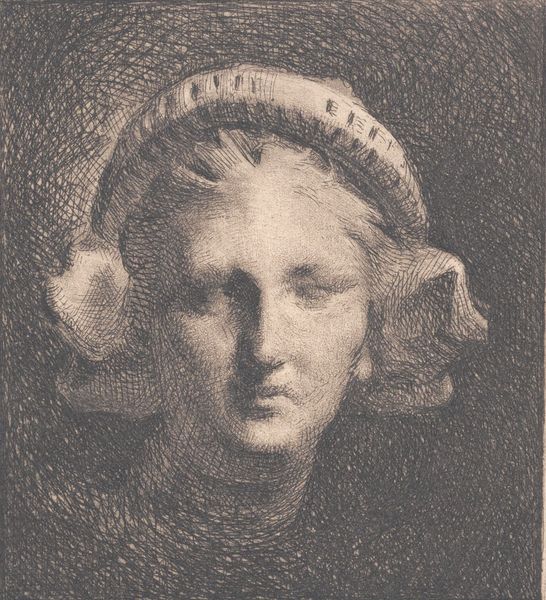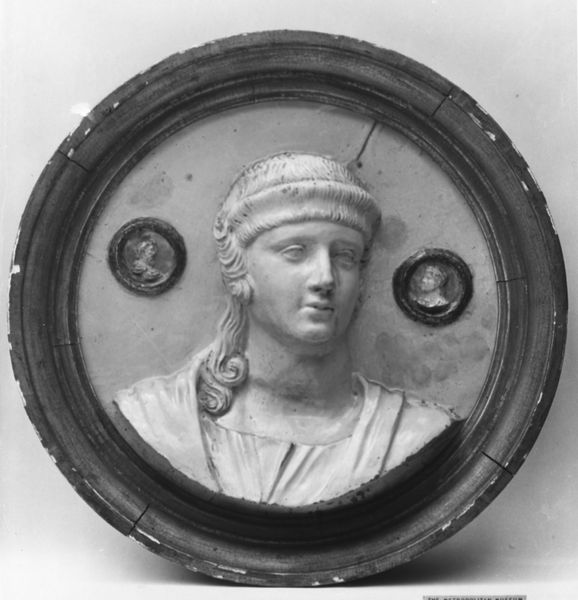
drawing, graphite
#
portrait
#
drawing
#
neoclacissism
#
sculpture
#
black and white
#
graphite
#
academic-art
Dimensions: 5.8 cm (None) (None)
Editor: So, this drawing is titled "Ung kriger med sværd"—"Young Warrior with a Sword"—by Cornelius Høyer, made sometime between 1756 and 1804. It's graphite on paper, and there's a captivating, almost melancholic air to the young man despite his armor and sword. What strikes you most when you look at it? Curator: It’s the inherent vulnerability, isn’t it? This meticulously rendered face staring out at us with this perfect storm of naivete, seriousness and fear. Höyer's mastery lies in capturing that sliver of humanity often obscured by the trappings of war, don't you think? Editor: Absolutely. I mean, look at the detail in the helmet versus the almost tender expression on his face. Were portraits like these common during that time period? What would the purpose of an image like this be? Curator: During the rise of Neoclassicism, there was this… obsession, I’d almost say, with idealizing the classical world—ancient Rome, particularly. This aesthetic pops up everywhere—sculpture, architecture, the theatre. Now, portraiture becomes less about merely documenting someone’s likeness and more about allegorizing aspects of their virtue and status. Though, something about this rendering, that young face… perhaps this one offers a quiet reflection on the cost of virtue and heroism, no? What do you make of it? Editor: I can see that tension. It is almost like the trappings of the armor and weaponry is covering someone that could not truly embrace the life of the soldier. Thinking of it from that point of view brings the work a whole new meaning! Curator: Right? And now think of this "Young Warrior" as more than a portrait. He's a reflection, a whisper across centuries, of all those wrestling with who they're told to be and who they truly are. What a responsibility to bare!
Comments
No comments
Be the first to comment and join the conversation on the ultimate creative platform.
